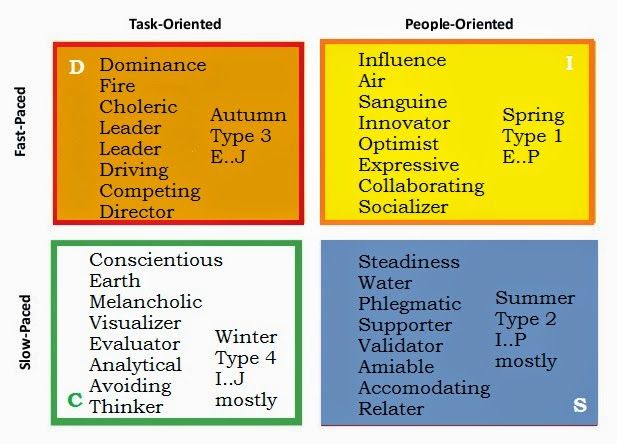Crimes committed by narcissists
The Ties Between Crime and Malignant Narcissism
What do Jim Jones, OJ Simpson, and Ted Bundy all have in common? They were charismatic, charming, and had the ability to influence almost anyone. They also demonstrated specific characteristics associated with malignant narcissism.
Malignant narcissism is known as a mixture of narcissism and antisocial personality disorder. They lack empathy and often live in grandiose fantasies that compete with reality. If the fantasies are revealed as such, the afflicted person may become hostile with high levels of rage.
Malignant narcissism is not an individual diagnosis in the DSM, rather it is a subset of Narcissistic Personality Disorder. As well as having symptoms of a Narcissistic Personality Disorder, a person with malignant narcissism also displays paranoia.
Jim Jones suffered from paranoid delusions especially during the last days of his cult. When he first became obsessed with the CIA, Jim Jones began his search for “The Promised Land. ” By instilling his fear into the minds of his followers, he was able to control large groups of people, ultimately leading to their death.
Since the personality of a malignant narcissist cannot tolerate any criticism, paranoia is usually stemmed from being mocked. Often times they will inflict paranoia in others by preaching highly controlled ideologies. Usually these are at least some-what fabricated to tailor the needs of the narcissist. Religion and philosophy are two categories they often gravitate toward. Pathological lying is another obvious trait of malignant narcissism. Ted Bundy lied about his killings to various professionals, but not to be considered innocent. For example, he told one psychologist that he started killing women in 1974, but later he said the killing started in 1969. At one point, Bundy said there were 35 victims in all, but in another setting he claimed over 100. The criminal investigation reports that Ted Bundy seemed to be lying to impress people rather than avoid jail. Many times he said the deaths of the women he killed were higher than the victims reported.
Many times he said the deaths of the women he killed were higher than the victims reported.
Pathological lying can be much more subtle than in Ted Bundy’s case. The term “gas lighting” is often used when someone denies another person’s reality to purposely manipulate them into feeling insane. This is another tactic frequently used in both malignant narcissists and general narcissists with NPD. Perhaps the most terrifying symptom of malignant narcissism is the lack of empathy that is required to carry out behavior. OJ Simpson frequently called his wife fat while she was pregnant. This was explained with the charisma of someone who was just “joking around.” Looking closer, this was not an isolated incident. He frequently beat his wife as well as publicly humiliated her by having affairs. When his wife was murdered, he seemed uninterested in his children, focusing more on himself. It is hard to prove that someone does not have empathy especially if that person is highly charismatic.
Someone with a lack of empathy may demonstrate kind facial or body language while simultaneously hurting another person. Because of the contrast in what is being said vs. what is being done, many people can feel as if they are losing their mind. The warning signs of involvement with someone who may be afflicted are as follows:
- Success At Any Cost. A close inspection of past relationships may show a failure to treat people kindly for the promise of a grandiose, yet superficial success. Beware of flaunted expenses, especially if there are a lack of people to share in the enjoyment.
- Narcissists may be hypersexual, often in relation to power and control. Incest is frequently reported as well as a lack of regard for partner and boundaries.
- Incessant Blaming. Lack of personal responsibility is a key sign. Often a narcissist will play ‘the victim’ even when he/she has hurt someone else.
- Violence.
 Since their ego is so fragile to begin with, any criticism received feels like an attack. They fight back much harder than what is doled out. Someone who uses violence frequently, demonstrates lack of impulse control and may also have multiple addictions.
Since their ego is so fragile to begin with, any criticism received feels like an attack. They fight back much harder than what is doled out. Someone who uses violence frequently, demonstrates lack of impulse control and may also have multiple addictions. - Manipulation. Pitting people against one another for the ultimate goal of loyalty is often used by narcissists. In this case, loyalty often means isolation.
If you are involved with someone who has these traits, most professionals advise leaving. There is no treatment for narcissism and statistically the outcome for change is low. The longer someone stays in a relationship with a narcissist, the worse they feel.
The Relationship Between Narcissistic and Antisocial Personalities
Types of Crime: The Relationship Between Narcissistic and Antisocial Personalities
Abbey Sereno
Narcissism: a disorder demonstrated by extreme self-involvement and lack of interest in and empathy for others combined with a need for admiration and patterns of grandiosity
Antisocial Personality: a disorder characterized by deceitfulness, impulsivity, irritability and aggressiveness combined with a reckless disregard for the safety of oneself and others, consistent irresponsibility and lack of remorse
Part One Offenses (Index Crimes): crimes committed against the person, including: criminal homicide, forcible rape, robbery, and aggravated assault, or those crimes committed against property including: burglary, larceny theft, motor vehicle theft, and arson
Part Two Offenses: those crimes that do not fall within the two categories of part one offenses and include: fraud, embezzlement, weapon offenses, and vandalism, but exclude traffic violations
Article #1: Personality Disorders and Violence Among
Female Prison Inmates. Janet I. Warren,
Mandi Burnette, Susan Carol South, Preeti Chauhan, Risha Bale, & Roxanne
Friend.
Janet I. Warren,
Mandi Burnette, Susan Carol South, Preeti Chauhan, Risha Bale, & Roxanne
Friend.
Investigated the relationship between mental disorders and violence
Significant relationships were found between antisocial personality disorder and institutional violence, and narcissistic personality disorder and incarceration for a violent crime
My Design (2x2x2):
IV #1: Narcissistic Personality (high vs. low)
IV # 2: Antisocial Personality (high vs. low)
DV: Types of Crimes (part one vs. part two)
Hypothesis #1: Those individuals high in antisocial personality are more likely to commit crimes.
Hypothesis #2: Those individuals high in antisocial
personality and narcissistic personality are more likely to commit part one
offenses.
Hypothesis #3: Those individuals high in narcissistic personality and low in antisocial will commit fewer crimes overall, with the majority of the offenses committed being part two offenses.
Male and female narcissism: different patterns of behavior
Is narcissism a behavior disorder or a norm? A family therapist can help you figure it out.
Narcissism has an inexplicable attraction. Rather, only at first glance inexplicable. In fact, the behavior of narcissists fits into a very simple logic.
See also: Positive psychology: how to be happy in the modern world?
Moreover, this logic has significant gender differences. nine0003
Family therapist Christian Hemschemeyer talks about these differences.
Charm and charisma
Narcissists often charm those around them. Their charismatic nature has a magnetic effect. But only for the time being.
Sooner or later, the beautiful facade collapses and we see their true nature. Moreover, this nature is different for men and women.
Narcissistic behavior itself is very strongly associated with the corresponding gender polarity. It is based on this polarity, taking into account the smallest details inherent in gender. nine0003
This is what makes the narcissist even more attractive to the opposite sex.
Diagnosis or normal?
In the past, and to some extent today, male and female narcissism were often associated with different diagnoses.
The men were diagnosed with narcissistic personality disorder. And in women - hysteria, or the so-called "border states".
And in women - hysteria, or the so-called "border states".
The new ICD 11 (International Statistical Classification of Diseases and Related Health Problems) finally clarifies these diagnoses. And many terms are omitted or described in more detail. nine0003
As a result, some conditions retained the nature of the diagnosis, and some finally acquired the character of the norm.
Who are narcissistic men?
So let's put other diagnoses aside and take a closer look at narcissistic behavior. The gender differences of narcissists are especially interesting.
Men with narcissistic behavior are often outspoken, assertive, aggressive, charming and "active".
This behavior is too often associated with masculine polar characteristics and evokes a certain charm. At least for the time being. nine0003
Sooner or later narcissists discover their very cold and dark side. It quickly becomes clear that good qualities are a kind of mask or cold calculation. For the sole purpose of obtaining confirmation of one's own qualities.
How does a female narcissist work?
Narcissistic women behave quite differently. First of all, there is a constant drive to convince the narcissist woman that she wants to be "saved."
At the same time, she herself usually creates situations and dramas in which it is impossible to escape. nine0003
There are aspects here that are usually perceived as typically feminine: strong emotionality, empathy and caring. In other words, a smoke screen of positive qualities, set up to inspire trust and the desire to "help" and "save".
They believe and save. Until, of course, the mask falls off here too. Narcissism always tends to end.
No matter how long the rope winds...
The most interesting thing in the behavior of narcissists of both sexes is the moment of denouement. When the masks are thrown off, and the true face of the narcissist is revealed in all its glory. nine0003
When a narcissistic man decompensates, that is, his behavioral pattern stops working, he is prone to instability. That is, a borderline state, when the psyche is trying to find a new balance.
That is, a borderline state, when the psyche is trying to find a new balance.
Here, self-preservation often takes precedence over emotions, and the narcissist leaves to "lick his wounds."
Whereas a narcissistic woman who becomes decompensated is more likely to progress in a psychopathological direction.
She goes all the way. False accusations are made, she is trying to finish off another person. Win at any cost. nine0003
Often this leads to severe injury or even serious mental disorders.
Why are gender differences in the behavior of narcissists so strong?
The explanation is again in the origins and goals of narcissistic behavior. Gender differences here are the defining factor of narcissism.
Of course, the above does not mean that all people who behave in polarized ways are necessarily narcissists.
But if you see such patterns, this is at least a reason to think. nine0003
See also:
- Positive psychology: advice from a German psychologist
- How to love yourself.
 Tips from experienced psychologists
Tips from experienced psychologists - Fear of war: 5 effective tips from a psychologist
Subscribe to our Telegram
Receive 1 message with top news per day, every evening on weekdays.
Why we love daffodils | Big Ideas
Why we love daffodils | Big Ideas Psychology nine0029 Article published in Harvard Business Review Russia Thomas Chamorro-PremusicHave you ever tried to understand why we are so attracted to selfish, arrogant, self-righteous and superior types? Narcissists parasitize on the established structure of society. In leadership positions, they cheat, intimidate subordinates, ruin the company. If they reach power in the country, the consequences will be poverty, rampant crime and high mortality. nine0003
But nevertheless, narcissistic anti-heroes - both fictional (Walter White characters from Breaking Bad, Batman, James Bond) and real (Silvio Berlusconi, Steve Jobs, Kanye West and most professional athletes) that half-fictional-half-real, like the Wolf of Wall Street, retain their appeal. Although these people are completely self-absorbed, they attract us - or because they attract us because they are self-absorbed?
Although these people are completely self-absorbed, they attract us - or because they attract us because they are self-absorbed?
So why? nine0003
Decades of scientific work have allowed psychologists to finally understand the mystery of this temptation and explain the mechanism that allows the narcissist to charm people and advance in any area of life. Here are the key ideas.
- Narcissists are masters at creating their image. Precisely because these people are focused on themselves and need flattery, they know how to make the first impression like no one else. They care about their appearance, dress thoughtfully: clothes indicate their status and inspire confidence. Kaiser and Craig, in their recent publication Destructive Leadership in and of Organizations, point out, “Self-obsession is precisely what gives the narcissistic personality its charisma.” In order to please at the first meeting, the narcissist is able to disguise his arrogance and present it as self-confidence, seasoning the conversation with jokes: such an interlocutor seems entertaining and even original.
 These people pass interviews with brilliance, acquire a lot of contacts. Often, it is by their activity in social networks that they are identified: who has the most retweets, friends, the highest Klout index? nine0079
These people pass interviews with brilliance, acquire a lot of contacts. Often, it is by their activity in social networks that they are identified: who has the most retweets, friends, the highest Klout index? nine0079 - Narcissists take credit and shift blame. These students of Machiavelli never admit their guilt, but shamelessly advertise themselves, appropriate other people's merits, and blame their own mistakes on colleagues and subordinates. As Ben Dattner points out, narcissistic managers “have only one goal: to maintain and improve their reputation. If something goes wrong, they will deny the facts, distort information, “rewrite history” so as not to take the blame.” And the conviction that they are right helps them to successfully cope with this difficult task. In the words of Duttner: "They are sure that they deserve the award simply by the very fact of their existence, regardless of the real effort or contribution to the common cause." Megalomania turns a narcissistic person into a much more skilled manipulator than ordinary people who know some political theory, but do not have enough conscience to distort reality or moral principles in their own interests.
 It is much more convenient to fool others when you first fool yourself: whoever believes in his innocence can sincerely refute any suspicions. nine0079
It is much more convenient to fool others when you first fool yourself: whoever believes in his innocence can sincerely refute any suspicions. nine0079 - Narcissists fit the common stereotype of the "leader". In the minds of many people, the images of a leader and a narcissistic personality merge, because narcissists skillfully scoop up as much power and influence as possible. However, an effective leader does not have to be an arrogant and charismatic egoist at all. Far from it. Of course, such qualities help to climb the career ladder, but when such a person gets to the top, then he will show his immorality and incompetence. In any field: in sports, business, education or politics, effective leadership requires building a well-coordinated team, and the key success factors invariably turn out to be not self-confidence, but competence, not selfishness, but altruism, honesty, not charisma. In other words, in real life a good leader is very far from the Hollywood image.















